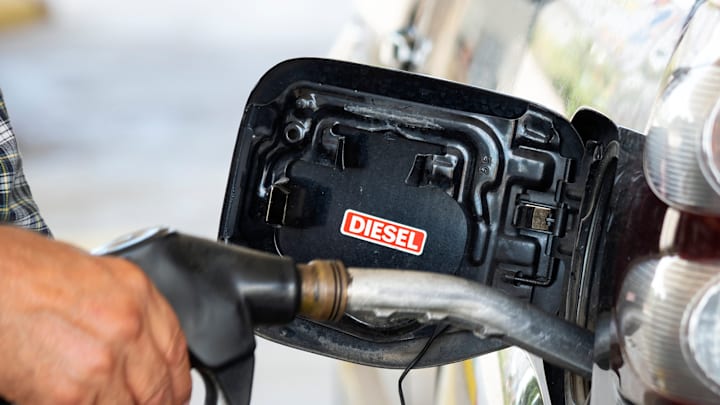You can know next to nothing about passenger cars and still realize that you should never pump your Honda or Hyundai full of diesel fuel. That’s because most commercial sedans run on gasoline; diesel engines and fuel are more likely to be found in larger cargo vehicles, where their weight makes diesel more fuel- and cost-efficient.
But why is it called “diesel fuel” in the first place? Easy: The engine is named for its inventor.
The Origin of Diesel
As an engineering student in late 19th-century Bavaria, Rudolf Diesel found little promise in steam and internal combustion engines. The main issue, Diesel observed, was that the heat generated in the engines was woefully inefficient, moving perhaps just 10 percent of their energy into applicable power.
“Is it possible to get greater efficiency?” Diesel wrote in his notes. “This has to be found out.”

Diesel tried. While working as an engineer in Paris, he experimented with ammonia as a fuel alternative, but the fumes proved problematic. Then, after much trial and error, Diesel finally found a workable idea. Gas combustion engines get their power by combining fuel with air and igniting the combustible mixture with a spark plug. Diesel’s idea was to compress only the air, making it hot enough (1650°F) to ignite added fuel. That made his engine 25 percent efficient, more than double the alternatives. (With continued development, the efficiency of diesel engines eventually approached 50 percent.)
In 1892, he patented his idea, dubbing it a “compression ignition engine.” His first successful trial came in 1894, when he proved he could make such an engine run for one full minute.

Countries flocked to Diesel’s revolutionary invention. By 1904, the French had entered into a deal with Diesel for engines that could power their submarines; explorer Roald Amundsen used a diesel engine to reach the South Pole in 1911. In the 1920s, the engines began showing up in the transportation industry. While the engines typically cost more upfront, their overall fuel efficiency was superior. Cargo ships, trucks, heavy construction equipment, and trains all relied on diesel power, which generated the torque necessary to move sizable weight affordably. The cost savings also led factory owners to install diesel engines into stationary plants.
Diesel was later evangelical about alternative fuel, even offering peanut oil as one possible path forward. But crude oils were the way, and both his engine and the thicker oil that powered it became known as diesel.
You Might Also Like ...
- Why Are Police Officers Called “Cops”?
- 5 Common Terms You Didn’t Know Were Named After People
- Why Is It Called a “Deadbolt”?
Diesel vs. Gas
Gas-powered engines work by mixing fuel and air and adding a spark; that energy powers pistons to move the wheels. But diesel fuel doesn’t readily mix with air, nor can gas engines provide the heat needed to ignite it. If you ever accidentally fill a gas-powered vehicle with diesel, it will need to be pumped out. (You’ll have to call for a tow truck, since you won’t be going anywhere.)
Because diesel fuel is able to propel vehicles with more torque, it takes less energy to get, say, a truck full of lumber moving. Long-distance truckers appreciate the faster acceleration diesel engines offer. But smaller vehicles traditionally run on gas.
In Europe, things are a little different. According to Car and Driver, diesel engines make up roughly half the consumer cars sold in Europe. There have been increasing attempts to get consumers stateside interested in commuter vehicles with diesel engines, but the (metaphorical) road is tough. Diesel has a reputation for being a “dirty” type of fuel and thus less environmentally-friendly.
As for Rudolf Diesel: Despite his ingenuity, his life ultimately ended in tragedy. On September 29, 1913, he was a passenger on the SS Dresden when he removed his coat and jumped over the railing into the sea below. Some have theorized he may have been pushed, as he was headed for England to greet British officials and offer his technology and patents—a possible concern for opposing countries. But it’s more likely he was despondent over his evaporating wealth due to bad investments.
